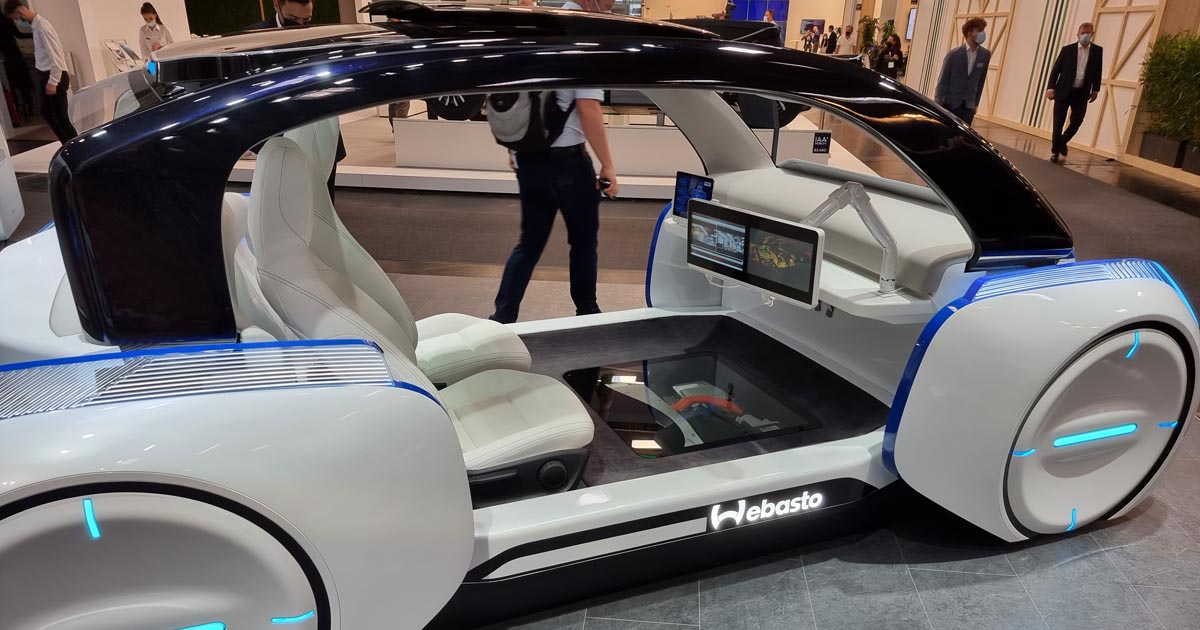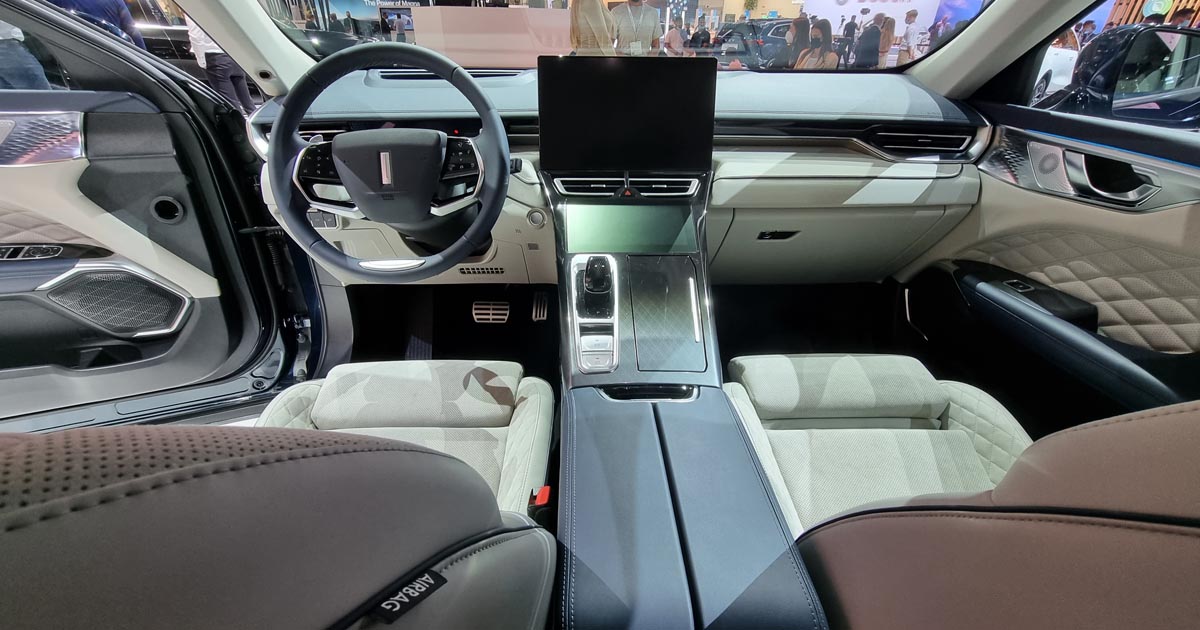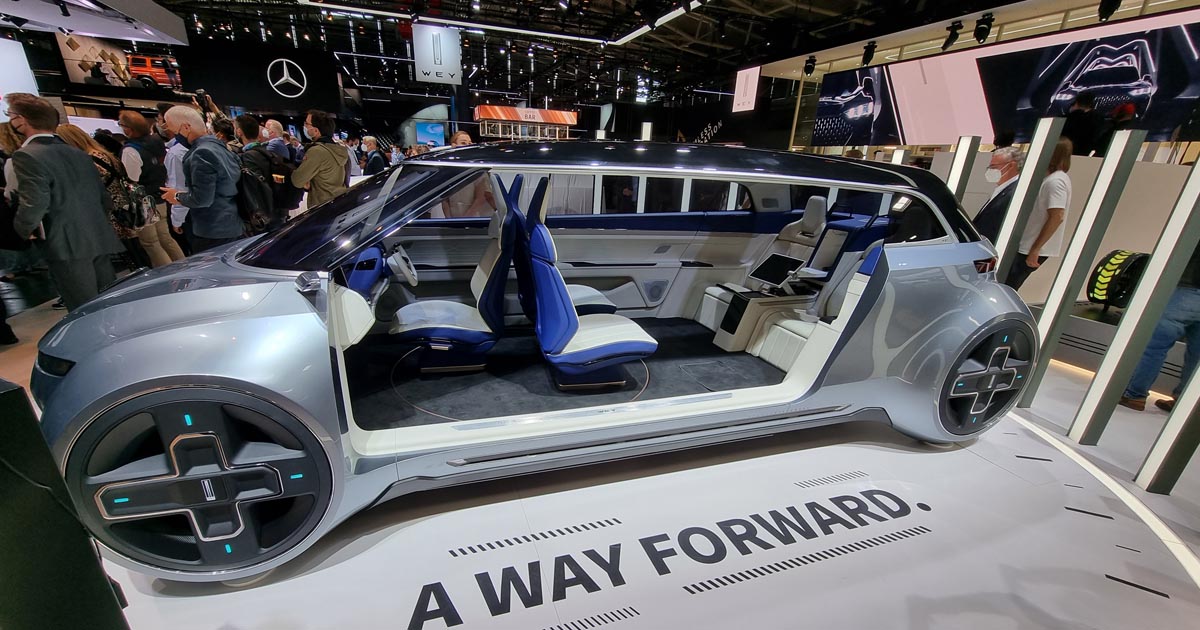The international motor show IAA wanted to make a new start this year. Away from a pure car show, towards a modern mobility trade fair. Not only was a new location found in Munich, but part of the trade fair was relocated to the city centre with the Open Space concept. I thought the idea was great, but I have to say that there is still room for improvement. Apart from the fact that some industry giants were missing, I would have liked to see a more lively and futuristic fair.
Nevertheless: In the following I would like to summarise a few impressions that I took away from this year's IAA Mobility.

For me, electric mobility was the dominant topic at this year's IAA. Electric vehicles everywhere. I was really impressed by the fact that the Chairman of the Board of Management of Volkswagen Group, Herbert Diess, spoke about decarbonisation and sustainability for half an hour without putting his own products in the foreground. I had to smile a little that a few highly tuned combustion engines had to share a hall with the classic cars. Even though there were many positive impressions, one should not ignore the other side. It's clearly visible that the vehicles are getting bigger and bigger on average. SUVs seem to be the new entry-level segment. That it's also possible to build attractive small vehicles for urban applications, in which the concept "electric drive" can also unfold its maximum value, was only shown by some niche suppliers.
Buttons, levers and sliders have had their day. The new cockpit is digital to the max. Head-up displays, huge touchpads and digital screens adorn the modern dashboard - the logical consequence of an increasingly digital world. Here, there are two advantages in particular that I see. Number one is the experience factor. When I think of myself, a luminous HD display simply arouses different emotions than a simple plastic button. In this way, even air conditioning or adjusting the exterior mirrors can be fun. Number two is that such a display is basically nothing more than a permanent interface to the user. This is of immense importance for the traditionally extremely important aftersales business of OEMs (Original Equipment Manufacturer), for example. Above all, it opens up possibilities for a new, modern and digital aftersales business. The OEM can sell new assistance systems, navigation services or other digital services , for example. This interface is also becoming increasingly important for us as an insurance company. Imagine you spontaneously lend your car to a family member for a weekend and you could take out the corresponding insurance directly in the car. Wouldn't that be ingenious?

Bicycles, electrified or traditional, are also an important part of mobility. To underline this, there were two entire halls dedicated exclusively to the topic of bicycles. To put the importance of e-bikes into perspective, last year about three million vehicles were registered, and the number of e-bikes was just near to two million. For example, it takes much less effort to make the 20-kilometre trip to work on an e-bike than on a traditional bicycle. Particularly because of the exploding number of registrations, e-bikes are highly interesting from an insurance perspective. In addition to the classic casco products, a link with the "health" segment is also conceivable, because cycling keeps you healthy.
I would also have liked to write something about autonomous driving. I had great expectations here and of course there were various OEMs, suppliers and start-ups that presented their developments on this topic. Nevertheless, none of this was tangible for me at any point. At no point I had the feeling that anyone had the one solution that would soon revolutionise traffic and mobility. But again - to be fair - the big players in this field, Google or Waymo, Argo or Cruise were not there.
Text: Sebastian Meerschiff, Automotive Analyst at ERGO Mobility Solutions

Most popular